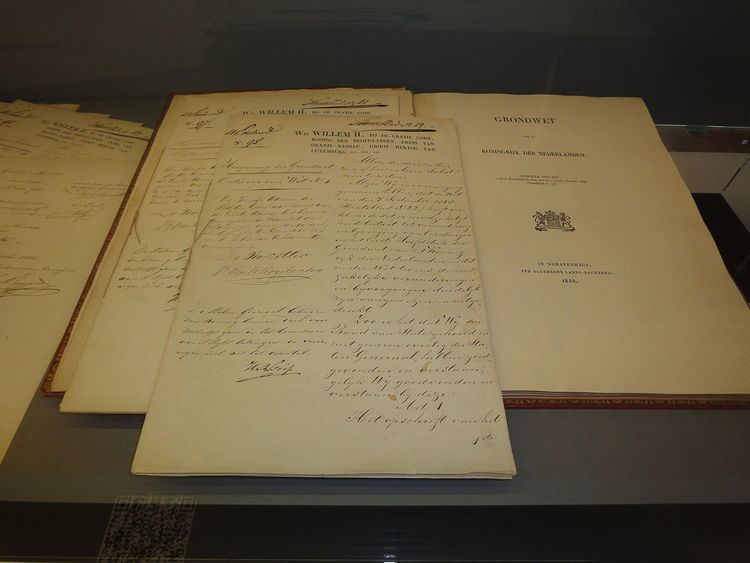 | ||
The Constitutional Reform of 1848 (Dutch: Grondwetsherziening van 1848) laid the basis for the present system of parliamentary democracy in the Netherlands. It is often described as the original version of the Dutch Constitution that is still in force today. Under pressure from the Revolutions of 1848 in surrounding countries, King William II agreed to several demands of the liberal parliamentary opposition. The House of Representatives obtained much more influence, and was now directly elected (although still by a restricted group of voters within a system of single-winner electoral districts). The reform was in some sense a peaceful revolution, in which liberal politician Johan Rudolph Thorbecke and King William II played important roles.
On 17 March 1848, the king appointed a state commission led by Thorbecke to prepare the Constitutional Reform, which was finished on 19 June. The commission's draft formed the basis of the government's proposals. The king and minister Donker Curtius then made sure that the proposals were accepted by both Houses of Parliament, both of which still had a conservative majority. Agreement was reached on 11 October 1848. On 3 November 1848, the new Constitution was proclaimed.
The most important changes included:
The freedom of ecclesiastical organisation enabled the Catholic Church to reestablish the episcopal hierarchy in the Netherlands in 1853 (the previous hierarchy had been abolished during the Eighty Years' War). This challenged the perceived notion of the Netherlands being a Protestant nation, but Prime Minister Thorbecke maintained that, based on the freedom of religion and separation of church and state, the Catholic Church was allowed to reorganise itself on Dutch territory. Conservative Protestants initiated the April Movement in an attempt to prevent it, winning the sympathy of King William III. This led to a constitutional crisis and the resignation of the Thorbecke cabinet, because the king had violated the new Constitution that prohibited his interference in political affairs, and the ministers had to take responsibility in his stead.
